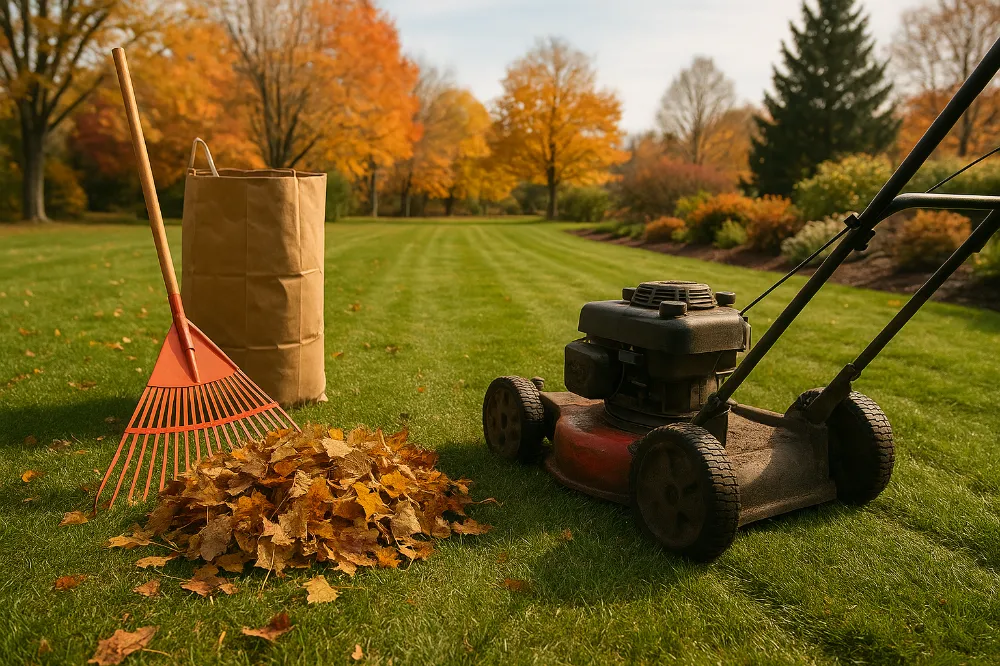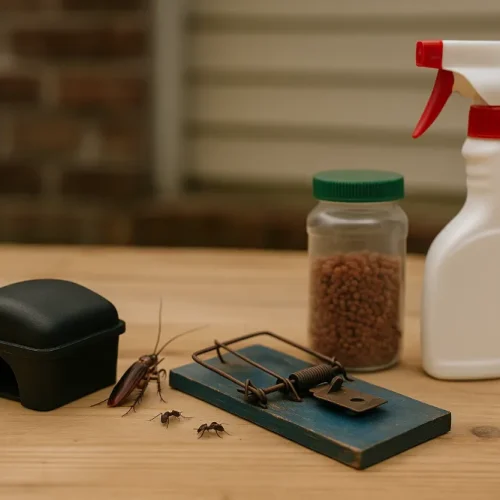
As the warm glow of summer gives way to the crisp air of autumn, it’s easy to forget about lawn care. After all, grass growth slows down, and fallen leaves take center stage. But don’t be fooled fall is one of the most crucial seasons for lawn maintenance. The work you put in now determines how lush, green, and healthy your yard will look next spring.
Here’s your complete guide to smart autumn lawn care packed with expert tips, seasonal advice, and professional insights to help you keep your landscape thriving through the colder months ahead.
1. Give Your Lawn a Proper Fall Cleanup
Before doing anything else, start with a thorough cleanup. Fallen leaves, branches, and debris can block sunlight, trap moisture, and suffocate your grass.
Use a rake or leaf blower to clear your lawn regularly. You don’t need to remove every leaf shredding a few with a mower can actually provide a natural mulch but avoid thick, soggy piles that can cause fungal diseases.
A clean lawn also helps fertilizers and nutrients reach the soil effectively, setting the stage for healthy root growth.
2. Keep Mowing—But Adjust the Height
Many homeowners stop mowing as soon as the weather cools down, but your grass still needs trimming until it goes fully dormant.
Continue mowing until late autumn, but gradually lower the blade height in your final few cuts. Shorter grass (around 2–2.5 inches) prevents matting and mold growth under snow cover while still offering enough protection for the roots.
Just make sure not to cut it too short scalping can stress your lawn and make it more vulnerable to cold damage.
3. Feed Your Lawn with a Fall Fertilizer
Autumn fertilization is like a power boost for your lawn before winter. While the grass slows down above the surface, roots are still actively growing beneath.
Apply a slow-release, nitrogen-rich fertilizer in mid to late fall. This strengthens root systems, enhances nutrient storage, and helps your grass recover faster once spring arrives.
Look for a fertilizer formulated for cool-season lawns, or consult your local landscaping expert for the best product for your region’s soil type.
4. Aerate to Let Your Lawn Breathe
If your soil feels compacted or water pools on the surface, it’s time for aeration. This process involves creating small holes in the soil to allow air, water, and nutrients to penetrate deep into the root zone.
Fall is the perfect time to aerate because cooler temperatures and increased moisture encourage strong root development.
You can rent an aerator for DIY use, or hire professional help to ensure the job is done efficiently and evenly across your yard.
5. Overseed to Repair Bare Patches
After aeration, take advantage of the loosened soil to overseed thin or patchy areas. Fall offers the best growing conditions for grass seed—cool days, warm soil, and consistent moisture.
Choose a grass seed mix suited to your local climate. Spread the seed evenly and lightly rake to ensure good contact with the soil. Keep it well-watered for the next few weeks to encourage germination.
By spring, you’ll notice a thicker, more resilient lawn that resists weeds and drought stress.
6. Mulch and Protect Your Garden Beds
Your lawn isn’t the only thing that needs attention during autumn. Garden beds, trees, and shrubs benefit greatly from a layer of mulch.
Mulching helps regulate soil temperature, retain moisture, and protect plant roots from freezing. Use organic materials like shredded leaves, straw, or wood chips. Spread about 2–3 inches around trees and shrubs but keep it a few inches away from the base of the trunk to prevent rot.
For professional assistance in maintaining plant health year-round, consider scheduling trees and shrub care services in Newton. Expert arborists can prune, mulch, and prepare your plants for winter while promoting stronger growth in spring.
7. Water Wisely Before Winter
Even as temperatures drop, your lawn still needs moisture to stay healthy. Continue watering until the ground begins to freeze.
Deep, infrequent watering encourages roots to grow deeper, making your grass more drought-tolerant and resilient during winter dormancy.
If your area experiences early frosts, drain and store garden hoses to prevent freezing and damage. Winterizing your irrigation system is also a smart move to avoid costly repairs in spring.
8. Control Weeds Before They Settle In
Weeds may not be as visible in fall, but they’re still active especially perennial varieties like dandelions and clover. Treating them now prevents them from spreading seeds and taking over your lawn next year.
Apply a post-emergent herbicide on a calm, dry day when weeds are still growing. Be cautious not to overspray on desirable grass or garden plants.
Combining weed control with aeration, overseeding, and fertilization gives your lawn a balanced, healthy foundation to outcompete unwanted growth naturally.
9. Inspect Trees and Shrubs Before Winter Storms
Autumn is also a great time to check your landscape’s trees and shrubs for dead or weak branches that could break under snow or wind.
Prune damaged or diseased limbs to prevent injury and property damage. This not only improves appearance but also enhances plant health by redirecting nutrients to strong, living branches.
If you’re unsure about pruning techniques or need professional assessment, trees and shrub care services in Newton can handle everything—from trimming and disease control to winter protection strategies.
10. Plan Ahead for Spring Success
Once your lawn and plants are prepped for winter, take time to plan for the upcoming growing season.
Keep notes on what worked and what didn’t this year such as grass varieties, watering schedules, or fertilizing products. This reflection helps you refine your lawn care approach and achieve even better results next year.
You can also start researching landscape design ideas or eco-friendly lawn improvements, like native planting or sustainable irrigation systems.
Final Thoughts
Autumn is the season of preparation and your lawn needs as much attention now as it does in spring. By aerating, fertilizing, overseeding, and maintaining your trees and shrubs, you set the stage for a lush, vibrant yard that will emerge strong after winter.
Remember, lawn care doesn’t stop when the leaves fall it simply shifts focus. With these smart autumn care tips and help from trees and shrub care services in Newton, you can protect your landscape through the cold months and enjoy a healthy, flourishing outdoor space year-round.
FAQs
Yes. Keep mowing until the grass stops growing, gradually lowering the blade height.
Fall care strengthens roots, repairs summer damage, and prepares your lawn for a healthy spring.
Clean leaves regularly to prevent moisture buildup, mold, and blocked sunlight.
A slow-release, nitrogen-rich fertilizer designed for cool-season lawns works best.
Aeration is especially helpful if your soil is compacted or water pools on the surface.
Overseed right after aeration when soil is loose and temperatures are cool.
Yes. Mulching, pruning, and inspections help protect them from winter stress.
Continue watering until the ground freezes, focusing on deep, infrequent watering.
Yes. Many weeds germinate in fall, so treating them now prevents spring spread.
If you’re unsure about pruning or winter prep, professionals can provide safe, effective care.













